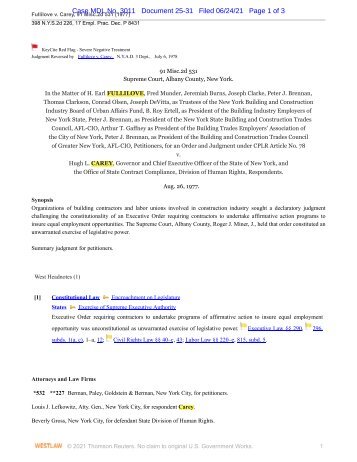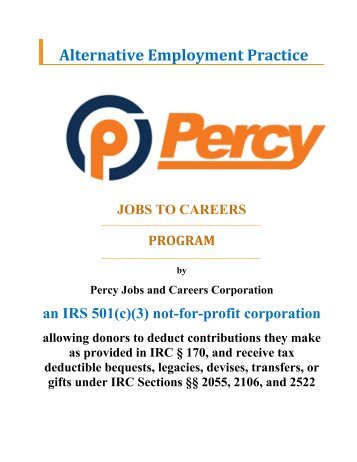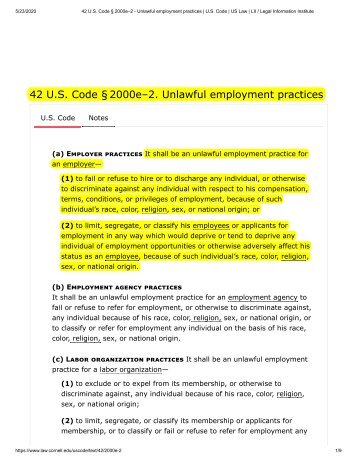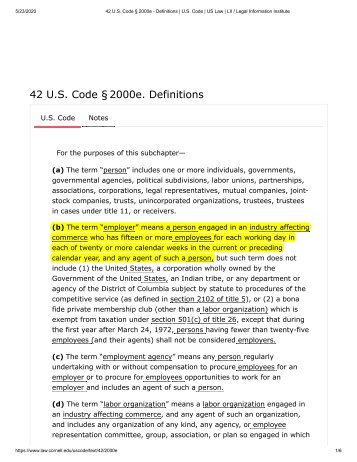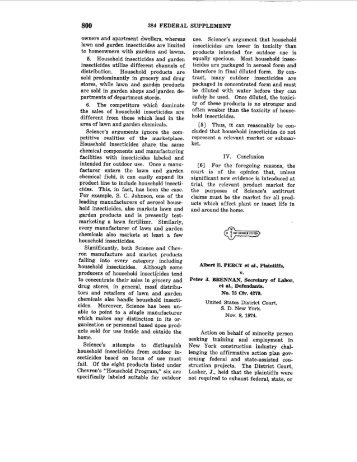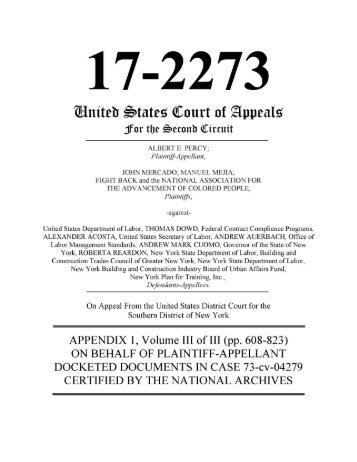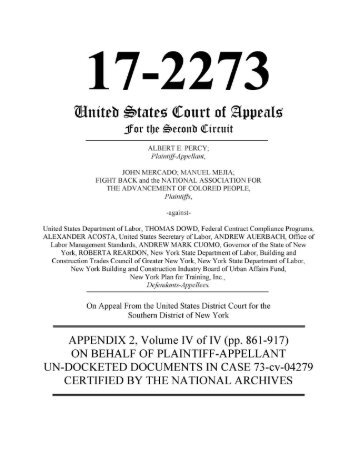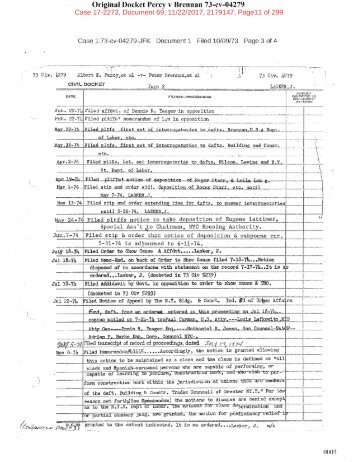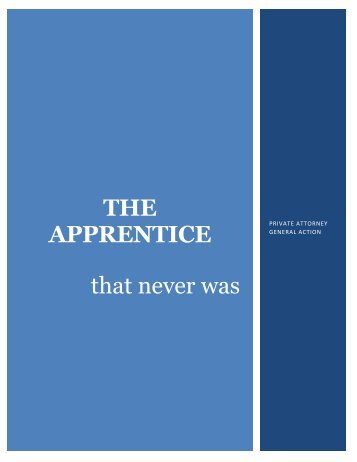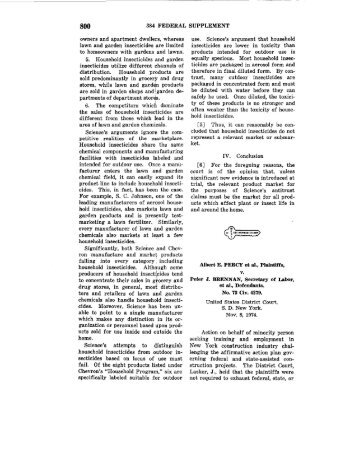The Percy Program
It is a fight to level the playing field to be able to compete for jobs and careers on the basis of skills and make available apprentice training to all. In 1973 Al Percy launched a class action lawsuit to give workers like him a chance to better their lot in life. It would also ensure the availability of skilled workers to build the infrastructure of the future.
Percy Action
Conkling[ 3 ] enter the
Conkling[ 3 ] enter the story. In 1865 Vice President Andrew Johnson became President and reconstruction of the south began. Conkling had previously been Lincoln's collaborator and supporter in Congress for freeing the enslaved people, and later a staunch supporter of President Grant’s efforts. Conkling began work in earnest on the 13 th , 14 th and 15 th amendments to the Constitution of the United States as a member of the Congressional drafting committee. Conkling’s focus was on the 14 th Amendment. Conkling understood the phrase "apprenticeship for freed-people” as a fundamental natural right to work, earn, live, and pursue happiness, full equal opportunity that should be afforded to all, including those as freed-people, natural rights of life, liberty and pursuit of happiness. When Lincoln was assassinated, Conkling rose to the need to determine and assure that the Constitution protected these rights, which lead to the 14th amendment to the U.S. Constitution. Conkling was instrumental to not only implementing emancipation which was granted by the 13th Amendment, but also equal protection of the laws afforded to all persons by the 14th Amendment. The 14th Amendment, drafted by committee, was ratified in 1866. Conkling was a principal contributor on the Committee drafting the 14th Amendment and its equal protection and due process clauses. Conkling tried to pursue the Lincoln vision, but the 10 years after Lincoln’s assassination, the 10 years following Lincoln’s vision of apprenticeship for freed people, were 10 years of anarchy and lawlessness which brought President Ulysses S. Grant and his close friend Conkling to utter frustration. Reconstruction was failing. It was then that Senator Francis Kernan, on an Electoral Commission to settle the Presidential Election of 1876, cast a deciding vote to accomplishing the compromise of 1877 to preserve the Union, end Reconstruction, and bring the southern states behind a compromise presidential candidate - Rutherford B. Hayes[ 4 ]. Apprenticeship for freed people was lost, the apprenticeship plank of Reconstruction was abandoned [ 3 ] Bibliography Manuscript research reference [ 4 ] Bibliography manuscript research reference iii
in the compromise of 1877 which ended Reconstruction[ 5 ]. Conkling had declined a seat on the committee knowing what the outcome was sure to be – there would be an abandonment all efforts to provide equality. Conkling later became lost as a dark figure of graft and corruption at the New York City Customs House, finally dying in the blizzard of 1888 walking from his office at Wall Street to Union Square. A sorry end, Conkling had abandoned his moral compass[ 6 ]. Apprenticeship did not again resurface for the benefit of freed persons until the Percy Class sued in 1973 to eliminate discrimination in economic opportunity, eliminate segregation and eliminate disparate opportunity. The Percy v. Brennan lawsuit followed as a result of the civil rights movements of the 1960s. Percy as a Class now complains that if the Class had gotten what was long ago a vision called apprenticeship, a vision not fulfilled even 154 years later, the world would be a much different place today. Franklin Roosevelt Apprenticeship was not formalized as a federally adopted structured program until the National Apprenticeship Act of 1937, and even then was not used as an opportunity to teach skills to disadvantaged persons. In 1937, the Congress passed the National Apprenticeship Act (29 U.S.C. 50), also known as "the Fitzgerald Act." The Act established a national advisory committee whose task was to research and draft regulations to establish minimum standards for apprenticeship programs. The Act was later amended to permit the United States Department of Labor to issue regulations protecting the health, safety and general welfare of apprentices, and to encourage the use of contracts in the hiring and employment of them. Much like FDR’s Work Projects Administration (WPA), which put the unskilled to work building America’s airports, schools, and highways, apprenticeship programs can once again train the unskilled to build today’s infrastructure. The WPA maintained and increased working skills; and it [ 5 ] Bibliography Manuscript research reference [ 6 ] Bibliography Manuscript research reference iv
- Page 1 and 2: THE APPRENTICE PRIVATE ATTORNEY GEN
- Page 3: The dilemma Lincoln was facing was
- Page 7 and 8: often unable to keep their jobs and
- Page 9 and 10: Available Less Discriminatory Alter
- Page 11 and 12: UNITED STATES DISTRICT COURT for th
- Page 13 and 14: accepting Defendant New York State
- Page 15 and 16: ceased and the US withdrew from Sou
- Page 17 and 18: compliance with the New York State
- Page 19 and 20: A, Pt. 29 and Pt. 30. (the Fitzgera
- Page 21 and 22: y Secretary of Labor Herman in Apri
- Page 23 and 24: 51. There are a wide variety of spe
- Page 25 and 26: 60. There are many paths of advance
- Page 27 and 28: 72. We (myself as Class Counsel, th
- Page 29 and 30: The New York State Department of La
- Page 31 and 32: 04279, Appendix 1, Volume 1, page 5
- Page 33 and 34: known as the National Apprenticeshi
- Page 35 and 36: 100. The Percy Program (XVI. THE PE
- Page 37 and 38: which was done at Docket #96-104 in
- Page 39 and 40: economic and social injury and dama
- Page 41 and 42: Department as a mechanic at the Cen
- Page 43 and 44: 125. Percy was not promoted, remain
- Page 45 and 46: seek for which this action has been
- Page 47 and 48: education, skills development, trai
- Page 49 and 50: XI. The Advocates ALTERNATIVE EMPLO
- Page 51 and 52: 158. The Percy Program first presen
- Page 53 and 54: REGULATORY APPROVALS OF PERCY PROGR
- Page 55 and 56:
on behalf of the Percy Class applie
- Page 57 and 58:
The Percy Program Presented to the
- Page 59 and 60:
States of America, and of rights se
- Page 61 and 62:
196. The apprenticeship program por
- Page 63 and 64:
wages and lost opportunity along wi
- Page 65 and 66:
214. In Case 73-cv-04279, Percy sou
- Page 67 and 68:
Percy Class when the State proffere
- Page 69 and 70:
willing and able to work, , and dam
- Page 71 and 72:
apprenticeship programs. The Percy
- Page 73 and 74:
clean their work surfaces. Working
- Page 75 and 76:
negative pressure, positive pressur
- Page 77 and 78:
temperature & humidity of the work
- Page 79 and 80:
systems), the ordering process (e.g
- Page 81 and 82:
decontamination work area, mechanic
- Page 83 and 84:
employee information and training,
- Page 85 and 86:
mitigate the hazards are emphasized
- Page 87 and 88:
Lead Worker EPA 270. Lead hazard co
- Page 89 and 90:
compensation carrier that is also a
- Page 91 and 92:
The maximum amount that a multiple-
- Page 93 and 94:
Annual Standard Premium which is as
- Page 95 and 96:
of audited standard premium. Amendm
- Page 97 and 98:
State’s offer of EO 45, but EO 45
- Page 99 and 100:
XXVI. AS AND FOR A FIFTH CAUSE OF A
- Page 101 and 102:
the availability of the singular cr
- Page 103:
disenfranchised, and, pray that thi
Inappropriate
Loading...
Mail this publication
Loading...
Embed
Loading...
